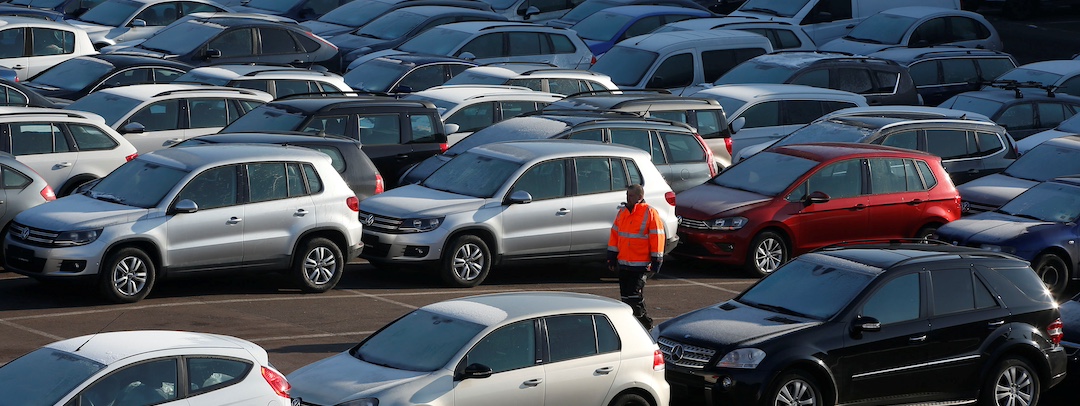Transport & Environment (T&E), Europe’s leading clean transport campaigning group, hosted a webinar on how to decarbonize all cars on the continent.
During the webinar, Yoann Gimbert, T&E’s Senior Analyst, explains the roadmap to Zero Emission they’ve designed to ensure the European Union’s (EU) climate objectives are met.
This roadmap also provides clean and fair solutions to help drivers transition from polluting vehicles to electric vehicles (EVs).
“There is a significant gap between regulatory scenarios and this climate objective. Additional measures are needed to gradually phase out the entire petrol and diesel fleet,” comments Gimbert.
It’s worth noting that last year the EU formally approved the 100 percent zero-emission car target for 2035, and in February, the European Commission presented its assessment to set a climate target for 2040.
In the New Ambition 2040, recently published by the Open Commission in its Impact Assessment, a 90 percent reduction of emissions for the entire economy for that period is mentioned.
They also indicate a specific trend in road transport, which would lean towards a decrease of -86 percent.
The aim is to gradually pave the way to achieve the goal of net-zero emissions by 2050.

Lucien Mathieu, Director of Cars at T&E, argues: “We aim to reduce carbon emissions from the automotive sector, which have increased by 16 percent since 1990. In the next 26 years, we need to bring that number down to zero.”
And he adds: “Transport is the only sector where emissions are increasing despite the climate crisis, so the challenge is enormous, and we need a comprehensive strategy to achieve it.”
Next, Mobility Portal Europe summarises the initiatives proposed by T&E.
1. Maintaining Sales Targets

The first proposal is to maintain the sales target for zero-emission cars by 2035.
“Backing away from this target would not only make decarbonization unfeasible by 2050 but would also threaten European competitiveness and investments. This target is central to regulatory and investment stability,” Mathieu asserts.
Gimbert adds, “Even with internal combustion engines phased out by 2035 and the natural turnover of cars in the fleet, there would still be 73 million petrol vehicles in 2050. That’s a problem.”
2. Corporate Electric Vehicles
To kickstart car decarbonization, it’s necessary to accelerate the adoption of EVs, primarily in corporate fleets, which can also be leased to private consumers.
These cars are driven approximately twice as much as private ones, and “their sales account for 58 percent of new unit sales in the EU.”
Therefore, T&E states, “We call for 100 percent of new corporate vehicles in large fleets and the leading sector to be zero-emission by 2030, with an interim target of 50 percent by 2027.”
3. Retrofit as an Innovative Proposal
In order to provide clean solutions for everyone, including drivers who do not yet own a car, T&E proposes alternatives that can adapt to various scenarios.
Firstly, they mention a Scrappage and Mobility package, where the driver would give up a private vehicle in favor of public transport, cycling, and sharing an electric unit.
Another option is the Scrappage and new BEV scheme, where social measures would be offered to enable drivers to acquire a new car.
Additionally, it includes provisions such as leasing a BEV for less than 100 euros per month.
The third solution is a Scrappage plan to obtain a used BEV, which is affordable for low-income households.
As a fourth proposal, they refer to the conversion of old cars to electric through the process called “E-retrofit.”
This could become accessible in the future, especially by 2030 when battery prices are expected to be lower. Additionally, this measure could be supported by subsidies for low-income households.
Lastly, they mention e-petrol, a measure that T&E considers “negative” and therefore as a non-credible solution for decarbonizing cars.
It is worth mentioning that this synthetic fuel can be produced from hydrogen and carbon, and it is used to capture carbon dioxide from the air.
“The scrappage scheme and the E-retrofit conversion are the most appropriate solutions,” they summarise.
4. Reducing passenger activity
This point is aimed at avoiding an increase in automotive activity.
In Europe, this action has increased by 17 percent since 2000 and has not been affected thanks to improvements in car efficiency.
Gimbert expresses his concern about this: “The European Commission expects passenger activity to continue growing by 20 percent by 2050.”
And he adds: “That could counteract other measures. It would be ideal if we could avoid this growth and have additional standards for it.”
As a solution, the association proposes preventing the construction of new roads, more model shifts towards active travel, zero emissions within cities, and the use of railways for longer distances.
The EU Emissions Trading System, the ETS 2, is expected to increase fuel prices in the coming years.
“This means that the scenario is mainly based on the higher cost of mobility, and that is a problem for low-income citizens who need a car,” reveal the T&E representatives.
And they continue: “That’s why our roadmap aims to achieve the same level of ambition while ensuring a socially just transition”.







